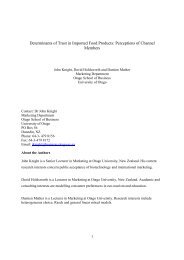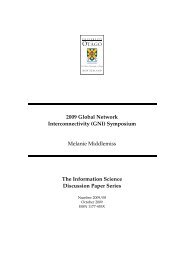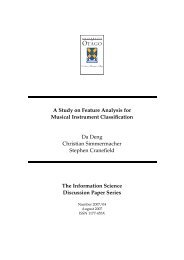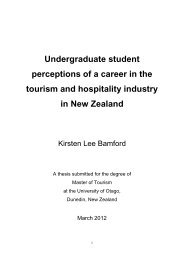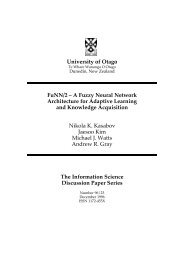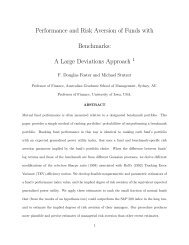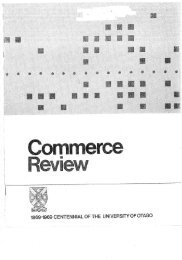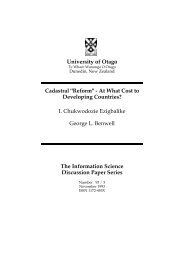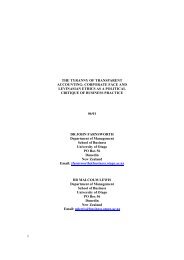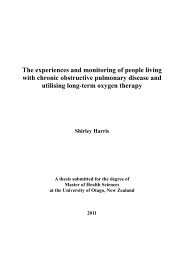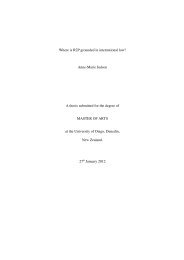Reframing perceptions of anthropomorphism in wildlife film and ...
Reframing perceptions of anthropomorphism in wildlife film and ...
Reframing perceptions of anthropomorphism in wildlife film and ...
Create successful ePaper yourself
Turn your PDF publications into a flip-book with our unique Google optimized e-Paper software.
<strong>of</strong> their <strong>film</strong>ed behaviour or biology. As a result there is a greater need to <strong>in</strong>terpret <strong>and</strong><br />
contextualise their behaviour <strong>in</strong>to the narrative <strong>and</strong> character-based structure <strong>of</strong> <strong>film</strong>.<br />
Given such <strong>film</strong>maker‘s editorial control <strong>and</strong> subjectivity, it is important to redef<strong>in</strong>e<br />
<strong>wildlife</strong> <strong>film</strong> away from the expectations associated with the documentary genre.<br />
This conclusion was also confirmed dur<strong>in</strong>g our own <strong>film</strong><strong>in</strong>g for Love <strong>in</strong> Cold Blood, as<br />
the methodology we followed was also more fitt<strong>in</strong>g to a <strong>film</strong> rather than to the<br />
documentary genre. In early 2009 we traveled to Nga Manu Reserve <strong>in</strong> Waikanae, New<br />
Zeal<strong>and</strong>, to <strong>film</strong> captive tuatara, hav<strong>in</strong>g already storyboarded <strong>and</strong> scripted the narrative<br />
we wanted. Throughout the <strong>film</strong><strong>in</strong>g period we waited for long periods to <strong>film</strong> the<br />
‗natural‘ behaviour we had scripted. Time constra<strong>in</strong>ts meant that we did create some<br />
behaviour- plac<strong>in</strong>g the captive tuatara where we wanted them <strong>in</strong> shot (Figure 1.1), or<br />
deliberately feed<strong>in</strong>g them <strong>in</strong>sects to obta<strong>in</strong> predation sequences. Carla <strong>and</strong> I did not<br />
consider this <strong>in</strong>vasive or unethical- the captive tuatara were normally fed live <strong>in</strong>sects<br />
<strong>and</strong> were <strong>of</strong>ten available for public <strong>in</strong>teraction <strong>and</strong> h<strong>and</strong>l<strong>in</strong>g. However, as Bousé (1998)<br />
suggests, it does cause complications when def<strong>in</strong><strong>in</strong>g our <strong>film</strong> as documentary. Natural<br />
behaviour was contextualised as re-enactments. Therefore I believe our <strong>film</strong>, along with<br />
other so-called documentaries, should be re-def<strong>in</strong>ed as a ‗<strong>wildlife</strong> drama‘, whereby<br />
<strong>anthropomorphism</strong> can be considered a legitimate <strong>and</strong> necessary characterisation<br />
technique.<br />
Figure 1.1) Stag<strong>in</strong>g weta predation; <strong>film</strong><strong>in</strong>g captive tuatara for Love <strong>in</strong> Cold Blood at<br />
Nga Manu Reserve, Waikanae. (Photo by Jane Adcr<strong>of</strong>t).<br />
8




